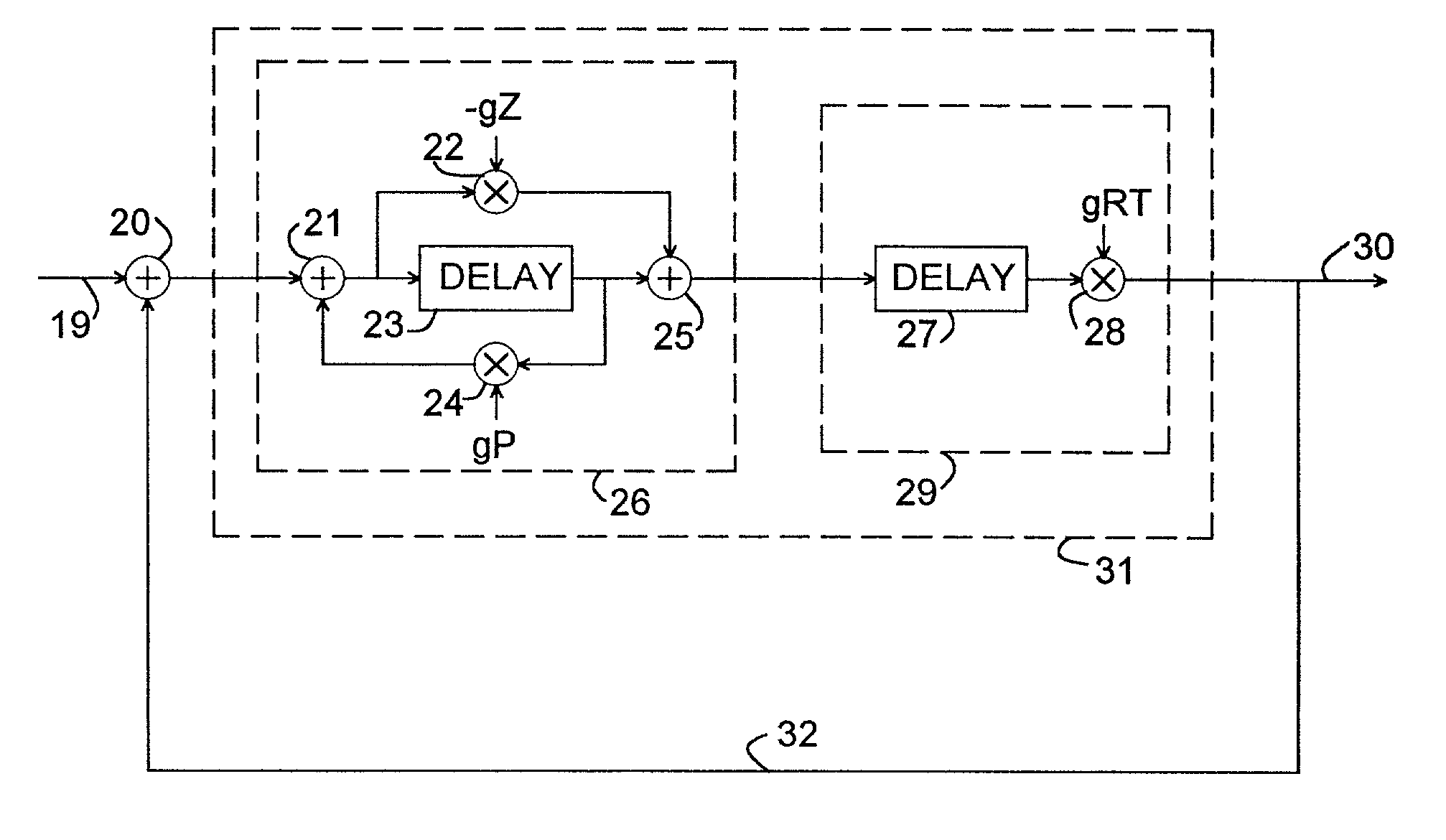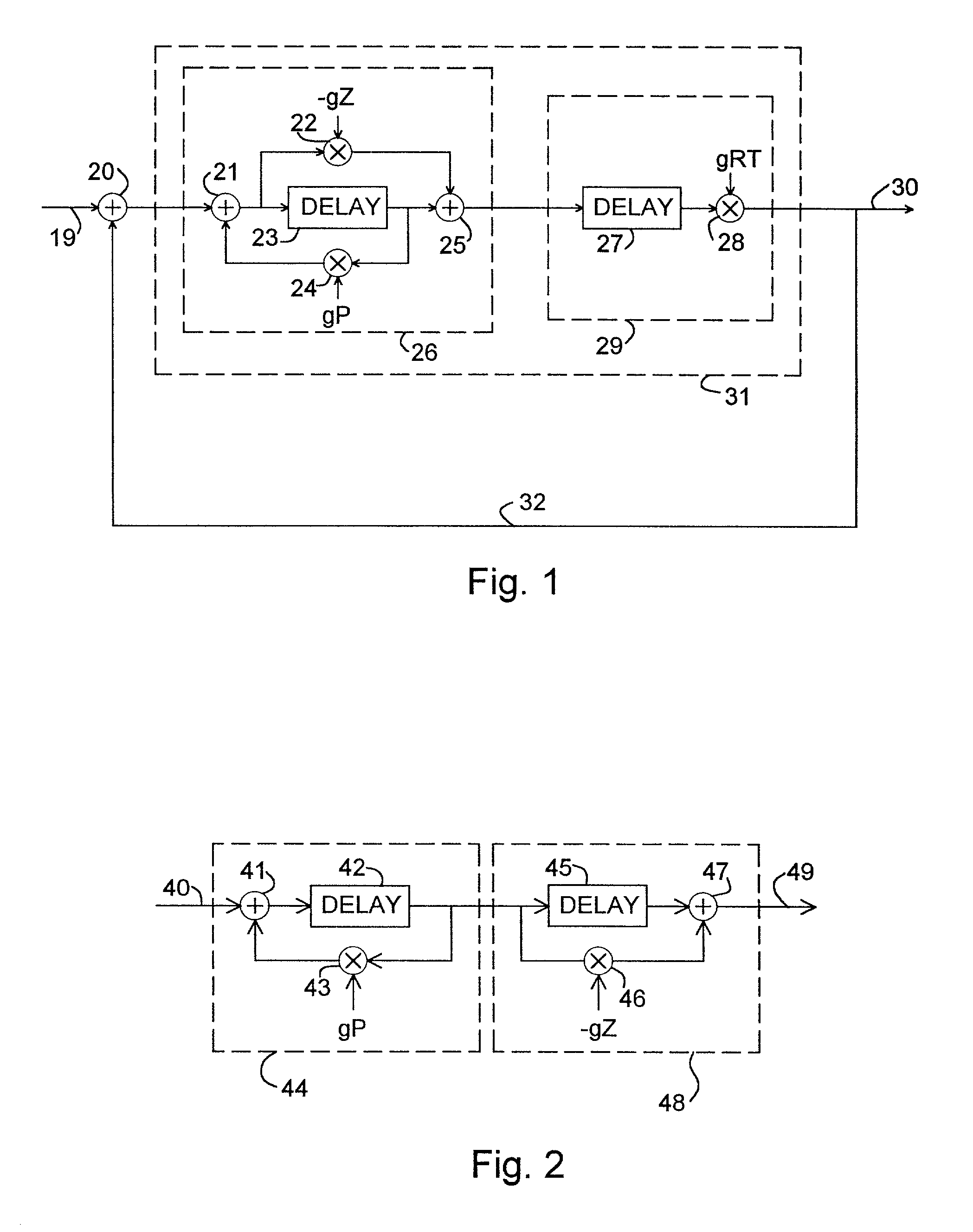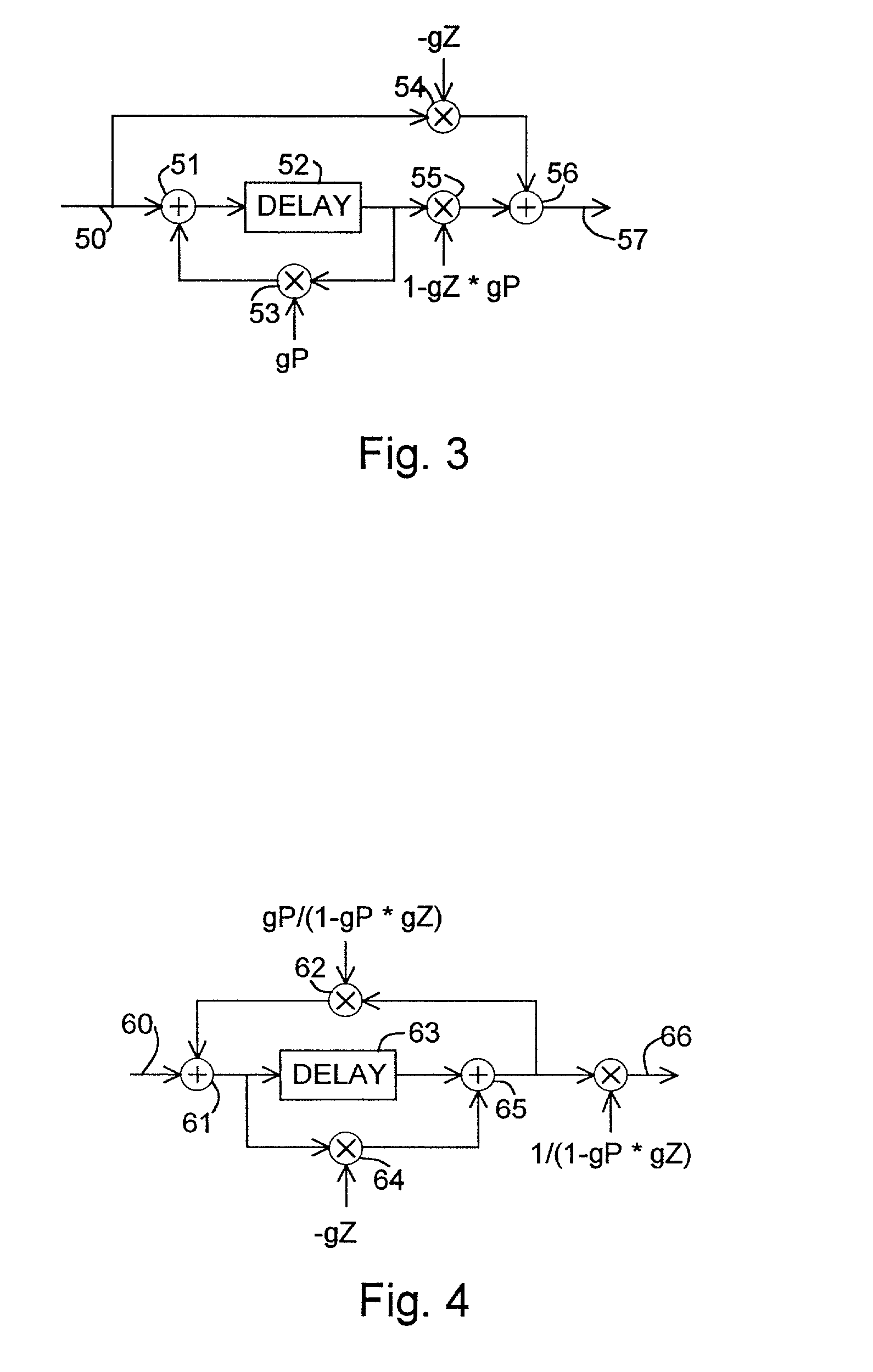Artificial ambiance processing system
a processing system and artificial ambiance technology, applied in the field of artificial reverberation and ambiance systems, can solve the problems of impulse response measurement decaying into noise level, unable to use averaging, signal processing systems often fail to accurately duplicate natural acoustics, etc., to achieve the effect of improving artificial reverberation and ambiance processing systems, increasing echo density, and dramatic increase in echo density
- Summary
- Abstract
- Description
- Claims
- Application Information
AI Technical Summary
Benefits of technology
Problems solved by technology
Method used
Image
Examples
Embodiment Construction
[0038]This invention provides a system capable of actively creating the required random temporal and spectral statistics of natural reverberation for audio signals, especially speech and music. An impulse and a sinewave are generally used to illustrate the behavior of the invention because they span the complete range of interesting audio cases. The former exists only in short instant of time but has a very broad spectrum; the latter exists for a long time but has a very narrow spectrum. The invention allows for the simultaneous optimization of both the impulse and sinewave response. The prior art puts these two optimizations in conflict. An unstructured high echo density no longer produces spectral coloration and vice versa. These conclusions may apply to a vast number of reverberation topologies and architectures.
[0039]Most reverberation systems contain a multiplicity of long delay lines with attenuation, called energy transmission networks. They hold and transmit the acoustic ene...
PUM
 Login to View More
Login to View More Abstract
Description
Claims
Application Information
 Login to View More
Login to View More - R&D
- Intellectual Property
- Life Sciences
- Materials
- Tech Scout
- Unparalleled Data Quality
- Higher Quality Content
- 60% Fewer Hallucinations
Browse by: Latest US Patents, China's latest patents, Technical Efficacy Thesaurus, Application Domain, Technology Topic, Popular Technical Reports.
© 2025 PatSnap. All rights reserved.Legal|Privacy policy|Modern Slavery Act Transparency Statement|Sitemap|About US| Contact US: help@patsnap.com



